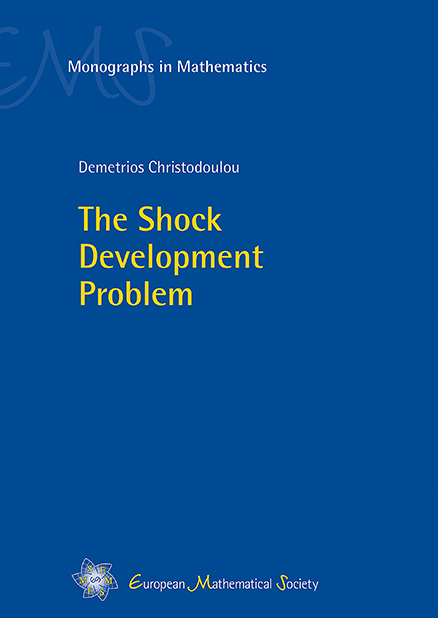
The Shock Development Problem
Seiten
2019
EMS Press (Verlag)
978-3-03719-192-7 (ISBN)
EMS Press (Verlag)
978-3-03719-192-7 (ISBN)
- Titel z.Zt. nicht lieferbar
- Versandkostenfrei innerhalb Deutschlands
- Auch auf Rechnung
- Verfügbarkeit in der Filiale vor Ort prüfen
- Artikel merken
This monograph addresses the problem of the development of shocks in the context of the Eulerian equations of the mechanics of compressible fluids. The mathematical problem is that of an initial-boundary value problem for a nonlinear hyperbolic system of partial differential equations with a free boundary and singular initial conditions.
The free boundary is the shock hypersurface and the boundary conditions are jump conditions relative to a prior solution, conditions following from the integral form of the mass, momentum and energy conservation laws. The prior solution is provided by the author‘s previous work which studies the maximal classical development of smooth initial data. New geometric and analytic methods are introduced to solve the problem. Geometry enters as the acoustical structure, a Lorentzian metric structure defined on the spacetime manifold by the fluid. This acoustical structure interacts with the background spacetime structure. Reformulating the equations as two coupled first order systems, the characteristic system, which is fully nonlinear, and the wave system, which is quasilinear, a complete regularization of the problem is achieved.
Geometric methods also arise from the need to treat the free boundary. These methods involve the concepts of bi-variational stress and of variation fields. The main new analytic method arises from the need to handle the singular integrals appearing in the energy identities. Shocks being an ubiquitous phenomenon, occuring also in magnetohydrodynamics, nonlinear elasticity, and the electrodynamics of noninear media, the methods developed in this monograph are likely to be found relevant in these fields as well.
The free boundary is the shock hypersurface and the boundary conditions are jump conditions relative to a prior solution, conditions following from the integral form of the mass, momentum and energy conservation laws. The prior solution is provided by the author‘s previous work which studies the maximal classical development of smooth initial data. New geometric and analytic methods are introduced to solve the problem. Geometry enters as the acoustical structure, a Lorentzian metric structure defined on the spacetime manifold by the fluid. This acoustical structure interacts with the background spacetime structure. Reformulating the equations as two coupled first order systems, the characteristic system, which is fully nonlinear, and the wave system, which is quasilinear, a complete regularization of the problem is achieved.
Geometric methods also arise from the need to treat the free boundary. These methods involve the concepts of bi-variational stress and of variation fields. The main new analytic method arises from the need to handle the singular integrals appearing in the energy identities. Shocks being an ubiquitous phenomenon, occuring also in magnetohydrodynamics, nonlinear elasticity, and the electrodynamics of noninear media, the methods developed in this monograph are likely to be found relevant in these fields as well.
| Erscheinungsdatum | 31.01.2019 |
|---|---|
| Reihe/Serie | EMS Monographs in Mathematics |
| Verlagsort | Zurich |
| Sprache | englisch |
| Maße | 165 x 235 mm |
| Themenwelt | Mathematik / Informatik ► Mathematik ► Analysis |
| Schlagworte | development of shocks • Free Boundary Problems • mechanics of compressible fluids • nonlinear hyperbolic partial differential equations |
| ISBN-10 | 3-03719-192-9 / 3037191929 |
| ISBN-13 | 978-3-03719-192-7 / 9783037191927 |
| Zustand | Neuware |
| Haben Sie eine Frage zum Produkt? |
Mehr entdecken
aus dem Bereich
aus dem Bereich
Band 5: Hydraulik, Stromfadentheorie, Wellentheorie, Gasdynamik
Buch | Softcover (2024)
De Gruyter Oldenbourg (Verlag)
59,95 €


